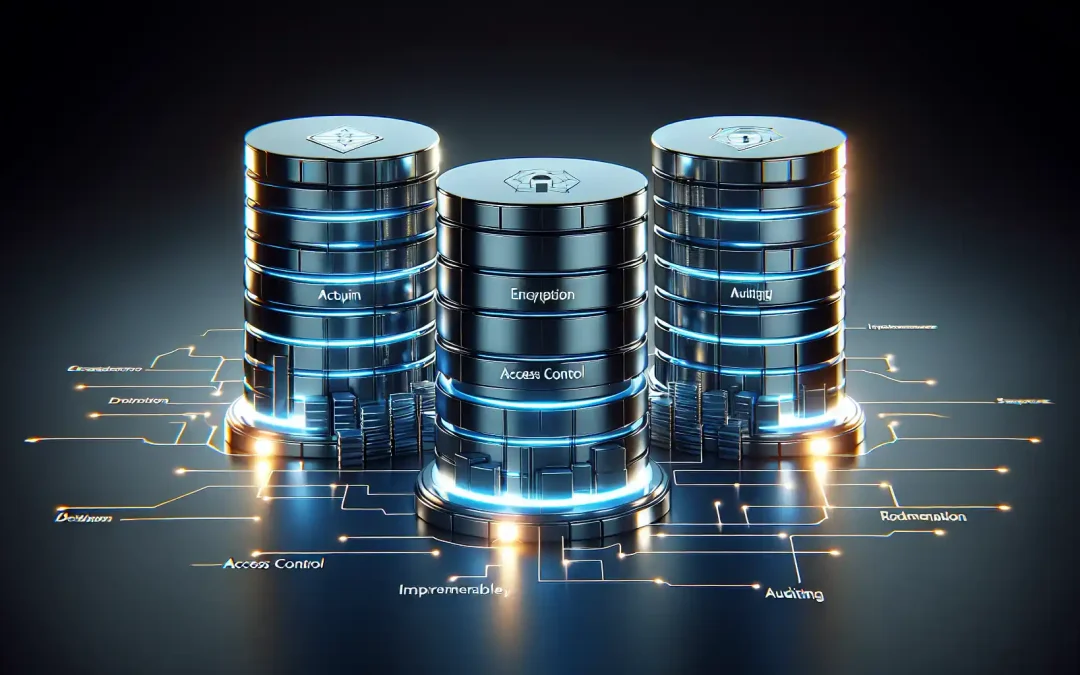As technology advances, decision making science has become increasingly important in the business world. Data insights allow businesses to make more informed decisions, leading to better outcomes and increased profitability.
The comprehensive guide to decision-making science is as follows:
- Understand the importance of decision-making science in business.
- Master the process of data collection, cleaning, and organization.
- Explore the benefits of using data insights for decision-making.
- Utilize different types of data for more accurate predictions.
- Understand the role of data analytics in decision-making.
- Examine how data visualization can improve decision-making.
- Dive into the world of machine learning and its impact on decision-making.
- Learn the best practices for implementing data-driven decision-making.
- And, Explore real-world examples of successful data-driven decision-making.
In this article, we’ll delve into the world of data insights, focusing on its crucial role in the decision-making process. We’ll explore the key steps involved in data analysis, providing you with a solid foundation to build your decision-making skills.
The information provided will give you a competitive edge in today’s data-driven business environment.
Let’s dive in!
Understanding The Importance of Decision-Making Science in Business

Today, businesses must navigate an ever-increasing amount of data to make informed decisions. This is where decision-making science comes into play.
In essence, decision-making science is the process of using data insights to inform and optimize the choices you make in your business.
It enables organizations to harness the power of their data to make smarter, more effective decisions. In turn, these decisions can lead to increased revenue, reduced costs, and a competitive edge in the market.
Decision-making science involves using a variety of tools and techniques, such as data analysis, predictive modeling, and machine learning, to extract meaningful information from data and use it to drive decision-making.
This article will provide you with a comprehensive guide to mastering decision-making science, from the fundamentals to the latest advancements.
By honing your decision-making skills, you can unlock the full potential of your data and make better decisions that drive success in your business.
Mastering the Process of Data Collection, Cleaning, and Organization

Data is at the heart of decision-making science, and as a professional, it’s important to understand how to collect, clean, and organize data effectively.
The process of collecting data involves identifying what data you need, where to find it, and how to gather it in a way that is both accurate and relevant.
Once you have collected your data, you will need to clean and organize it. This involves removing any errors or inconsistencies and structuring the data in a way that makes it easy to analyze.
To achieve success in this field, it’s crucial to have a strong understanding of data science and analytics, as well as the tools and technologies available to help you work with data effectively.
With the right knowledge and skills, you can collect, clean, and organize data with confidence, ensuring that you have the right information at your fingertips to make informed decisions.
Exploring the Benefits of Using Data Insights for Decision-Making

The use of data insights in decision-making offers a wide range of benefits for organizations. These include improved accuracy and reliability, reduced costs, and the ability to identify new opportunities for growth.
By leveraging data insights, you can make better, more informed decisions, and increase your chances of success in today’s competitive business landscape.
In this section, we’ll explore some of the key benefits of data insights and how they can help you improve your decision-making processes.
1. Enhanced Accuracy and Reliability
One of the main benefits of using data insights in decision-making is the enhanced accuracy and reliability of your decisions.
Data-driven decision-making allows you to base your choices on hard evidence rather than gut feelings or intuition, which can lead to more accurate predictions and better outcomes.
By analyzing historical data and identifying patterns and trends, you can make more informed decisions that are based on real data rather than speculation.
This can lead to improved accuracy, reduced errors, and more reliable outcomes.
2. Cost Reduction and Efficiency Improvement
Another benefit of data insights in decision-making is the potential for cost reduction and efficiency improvement.
By analyzing your data, you can identify areas where you can streamline processes, reduce waste, or eliminate inefficiencies.
This can lead to reduced costs, improved resource allocation, and overall increased profitability.
For example, by using data insights to optimize your supply chain, you can reduce inventory holding costs, minimize stockouts, and improve delivery times.
This, in turn, can lead to lower operational costs and increased customer satisfaction.
3. Identifying New Opportunities and Predicting Future Trends
Data insights can also help you identify new opportunities and predict future trends.
By analyzing your data, you can uncover patterns and correlations that may not be immediately obvious.
This can help you identify new market trends, customer preferences, or emerging opportunities for growth.
For example, by analyzing customer data, you may discover that there is a new, untapped market segment that your company could target.
You can also use data insights to predict future trends, such as changes in consumer behavior or market shifts.
This can help you stay ahead of the competition and capitalize on new opportunities as they arise.
4. Improved Collaboration and Communication
Data insights can also lead to improved collaboration and communication within your organization.
When everyone has access to the same data and understands how decisions are being made, it can lead to more open and transparent communication.
This can help to build trust and alignment within your team, leading to more effective collaboration and better decision-making.
By sharing data insights with your team, you can ensure that everyone is on the same page and working towards common goals.
This can lead to more cohesive decision-making processes and a more united and effective organization.
In summary, the benefits of using data insights for decision-making are numerous.
By leveraging data to make more informed decisions, you can improve accuracy and reliability, reduce costs, identify new opportunities, and improve collaboration and communication within your organization.
This, in turn, can lead to increased profitability, growth, and overall success.
Utilizing Different Types of Data for More Accurate Predictions

In today’s data-driven world, there are many different types of data that can be used to make predictions and inform decisions.
This section will explore the various types of data available and how they can be used to make more accurate predictions.
Some of the most common types of data that you may encounter include:
- Structured data: This is data that is organized into a format that is easily readable by machines, such as a database or spreadsheet. Examples of structured data include customer information, sales figures, and financial records.
- Unstructured data: This is data that is not organized in a predefined manner, making it more challenging to work with. Examples of unstructured data include social media posts, emails, and images.
- Qualitative data: This type of data provides insights into the opinions, attitudes, and feelings of individuals. Examples of qualitative data include customer feedback, survey responses, and interview transcripts.
- Quantitative data: This type of data is numerical in nature and can be easily analyzed using statistical methods. Examples of quantitative data include sales figures, website traffic, and customer demographics.
When it comes to making predictions and informed decisions, it is essential to understand the different types of data available and how they can be used to your advantage.
By leveraging the power of data insights, you can make more accurate predictions, improve your decision-making processes, and stay ahead of the competition.
Understanding the Role of Data Analytics in Decision-Making

Data analytics is a critical component of decision-making science. It involves using various techniques and tools to analyze data and extract valuable insights.
In today’s business world, data analytics plays a crucial role in helping organizations make informed decisions.
By using data analytics, you can gain a deeper understanding of your business, your customers, and your industry.
This allows you to identify trends, patterns, and opportunities, and make more informed decisions.
There are three primary types of data analytics: descriptive, predictive, and prescriptive.
- Descriptive analytics focuses on summarizing and interpreting historical data to better understand what has happened in the past.
- Predictive analytics uses statistical models and machine learning algorithms to forecast future outcomes and trends.
- Prescriptive analytics takes this a step further by recommending specific actions that should be taken to achieve a desired outcome.
By using data analytics, you can make more informed decisions, optimize your processes, and ultimately, improve your business performance.
Examining How Data Visualization Can Improve Decision-Making

Data visualization is a powerful tool for decision-making science, and can help you make more informed decisions by turning complex data into easy-to-understand visuals.
There are several ways that data visualization can improve decision-making, such as:
- Identifying patterns and trends: Data visualization allows you to see patterns and trends in your data that may not be immediately apparent when looking at raw numbers. This can help you make more informed decisions by understanding the underlying causes of certain outcomes.
- Spotting outliers and anomalies: Data visualization can also help you identify outliers or anomalies in your data, which may indicate a problem or opportunity. For example, a sudden spike in customer complaints could indicate an issue with a product or service.
- Communicating information effectively: Visuals are often more effective at conveying information than text or numbers alone. Data visualization can help you communicate your findings to others in a clear and concise manner, making it easier to make decisions based on the data.
In summary, data visualization is a powerful tool that can help you make more informed decisions by identifying patterns and trends, spotting outliers, and communicating information effectively.
By using data visualization tools and techniques, you can improve your decision-making processes and drive success in your organization.
Diving Into the World of Machine Learning and Its Impact on Decision-Making

Machine learning is a powerful subset of artificial intelligence that has revolutionized decision-making science.
It involves training algorithms to learn from data and make predictions or decisions without being explicitly programmed.
There are several ways that machine learning can impact decision-making:
- Automating processes: Machine learning can be used to automate repetitive tasks and processes, allowing you to save time and resources.
- Improving accuracy: By learning from data, machine learning algorithms can make more accurate predictions than traditional methods.
- Identifying patterns and trends: Machine learning can help you identify patterns and trends in your data that may not be immediately apparent to humans.
- Personalizing experiences: Machine learning can be used to personalize experiences for your customers or users by providing them with relevant recommendations or content.
Machine learning is a powerful tool that can have a significant impact on your organization’s decision-making processes.
By leveraging the potential of machine learning, you can improve accuracy, automate processes, and stay ahead of the competition.
Real-World Examples of Successful Data-Driven Decision-Making

In the modern business landscape, data-driven decision-making has become an essential tool for success.
Organizations of all sizes and industries are using data insights to inform their strategies, optimize their operations, and drive growth.
There are numerous examples of successful data-driven decision-making in the real world.
For example, Netflix uses data insights to personalize content recommendations for its users, which has been a key factor in its rapid growth and success.
Amazon uses data to optimize its supply chain and pricing strategies, which has helped it become one of the largest retailers in the world.
Data-driven decision-making has also been critical in the healthcare industry.
Organizations like the Centers for Disease Control and Prevention (CDC) use data insights to track and respond to public health threats, such as the COVID-19 pandemic.
In the sports industry, teams use data insights to improve their performance and make strategic decisions.
For example, the Oakland Athletics baseball team famously used data insights to assemble a competitive team despite having a limited budget, a story that was popularized in the book and movie “Moneyball.”
These are just a few examples of how data-driven decision-making has been used to achieve success in the real world.
In today’s business environment, organizations that can effectively collect, analyze, and act on data insights are the ones that will stay ahead of the competition and drive growth.
Final Thoughts

Decision-making science is an essential tool for success in today’s business world. By using data insights to inform your strategies and make decisions, you can improve accuracy, reduce costs, and identify new opportunities for growth.
Data-driven decision-making has become a cornerstone of success in the modern business landscape.
By mastering decision-making science, you can ensure that your organization stays ahead of the competition and continues to thrive in the data-driven future.
If you’d like to learn more about decision-making science and its applications, check out Enterprise DNA’s Learning Platform.
Frequently Asked Questions

How do I apply decision-making science in my business?
To apply decision-making science in your business, start by identifying the key decisions you need to make and the data that can help inform those decisions.
Then, use data analysis techniques to extract insights from the data, which can guide your decision-making process. It’s important to remember that decision-making science is an ongoing process, so continue to monitor and adjust your strategies as new data becomes available.
What are the main components of decision-making science?
The main components of decision-making science include data collection, data analysis, and data-driven decision-making.
Data collection involves gathering relevant information, data analysis involves extracting insights from the data, and data-driven decision-making involves using those insights to make informed choices.
What role does artificial intelligence play in decision-making science?
Artificial intelligence (AI) plays a significant role in decision-making science by automating and optimizing data analysis processes.
AI can process large amounts of data more efficiently than humans and can identify complex patterns and trends that may not be immediately apparent.
This can help organizations make more informed decisions and improve their overall performance.
What are the key benefits of applying decision-making science in a business setting?
The key benefits of applying decision-making science in a business setting include:
- Improved accuracy and reliability of decisions
- Enhanced understanding of customer behavior and market trends
- Identification of new opportunities for growth
- Reduced costs and improved efficiency
- Increased competitive advantage
- Better alignment of strategies with organizational goals
What are some common tools and techniques used in decision-making science?
Common tools and techniques used in decision-making science include statistical analysis, predictive modeling, machine learning, and data visualization.
These tools can help you identify patterns and trends in your data, make predictions about future outcomes, and communicate your findings in a more accessible way.
How can I learn more about decision-making science and its applications?
There are many resources available to help you learn more about decision-making science and its applications.
These include online courses, books, articles, and webinars.
You can also join professional networks or attend industry conferences to connect with experts in the field and learn from their experiences.











